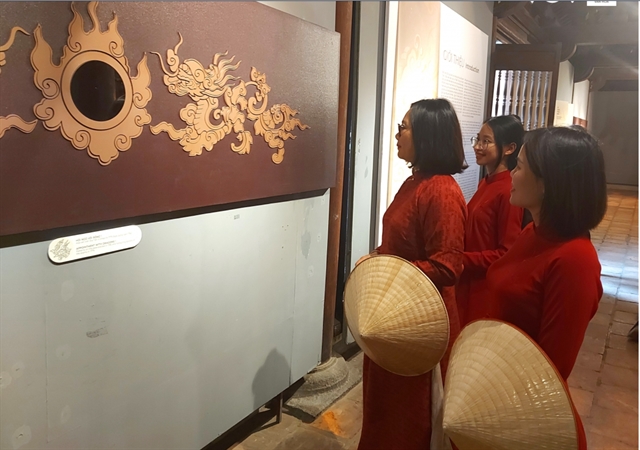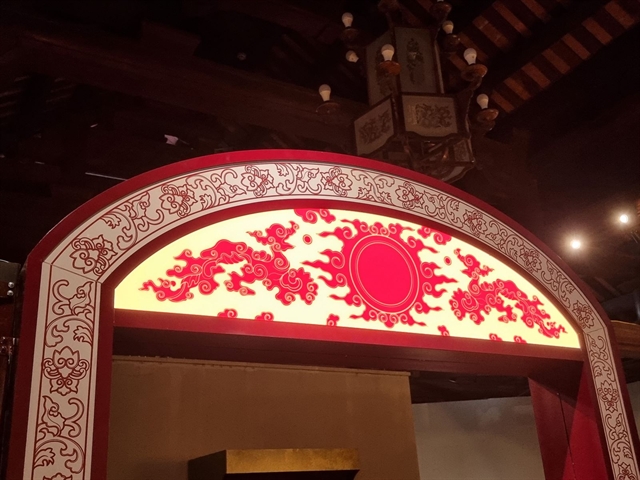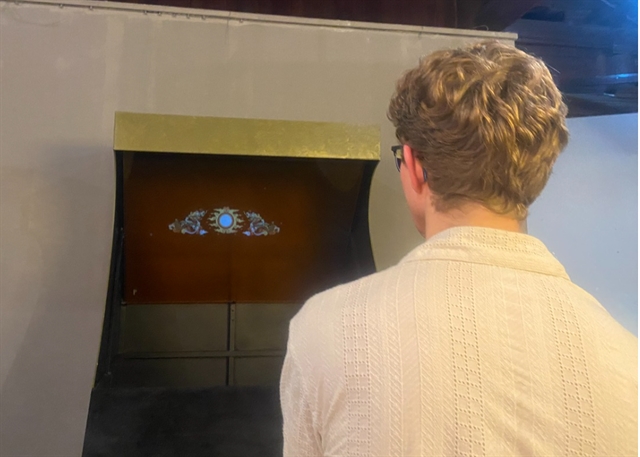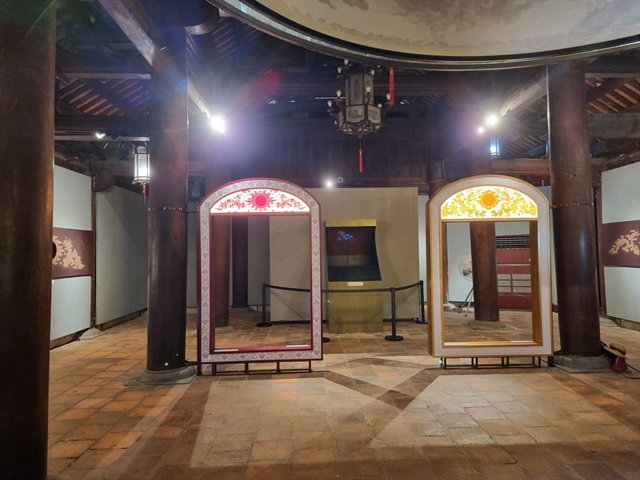 |
| Visitors admire a motif of dragon on doctoral steles at the exhibition Dragon Images on Doctoral Steles which is open in Văn Miếu - Quốc Tử Giám (Temple of Literature) in Hà Nội until August 26. Photo vov.vn |
HÀ NỘI – A special exhibition featuring dragon images on the stone doctoral steles at Văn Miếu - Quốc Tử Giám (Temple of Literature) is opening at the site of this historical cultural heritage in central Hà Nội.
The exhibition themed Hình Tượng Rồng Trên Bia Tiến Sĩ (Dragon Images on Doctoral Steles) celebrates the 70th anniversary of the Liberation Day of Hà Nội (October 10, 1954 - October 10, 2024).
It showcases various dragon motifs on 82 Thăng Long stone doctoral steles currently kept and preserved at the national special relic of Văn Miếu-Quốc Tử Giám.
Visitors to the event, which will last until August 26, will be surprised to discover about the ancient 'historical stone books' that vividly reflect the traditional education and study system, particularly examinations during the Vietnamese monarchy.
 |
| The dragon image on a doctoral stele is showcased vividly for visitors to Văn Miếu - Quốc Tử Giám - the special national historical cutural heritage. VNA/VNS Photo |
The works on display are all presented ensuring the respect of original features on the doctorate steles, thereby helping viewers to visualise more clearly the talent and skill of the stone craftsmen who devoted their hearts to creating the impressive sculpting.
Lê Xuân Kiêu, Director of the Centre for Văn Miếu - Quốc Tử Giám Cultural and Scientific Activities, said the steles are not only a valuable archive of history, culture, society and education in Việt Nam during the monarchy period, but also unique works of visual art, where stone carving artisans have conveyed many meaningful messages.
Among the patterns and motifs used to decorate the forehead and border of the steles, the dragon has always been given a very solemn position, he added.
Ranking the first in the list of four traditional mascot animals (dragon, unicorn, turtle and phoenix), the dragon has always been considered a sacred and noble symbol reserved only for kings. Therefore, its image mainly appears on the forehead of the stele - the most solemn part - and is often depicted in the composition of a dragon pair facing the Sun which is surrounded by fire between them.
"The image of the Sun itself is perhaps also considered a typical image of the endless source of knowledge and enthusiasm of each scholar on the path of study toward success," said Kiêu.
 |
| A foreign tourist enjoys the dragon image displayed with 3D technology in Văn Miếu-Quốc Tử Giám. Photo toquoc.vn |
Since many centuries have passed, each stele has suffered effects from the weather, with its surface having been significantly eroded and the motifs covered by the dust of time.
Thanks to the application of technology, researchers have not only recovered inscriptions on the steles that contain a lot of useful information, but also discovered a series of extremely sophisticated patterns and motifs.
Dragon motifs and patterns clearly appearing on the foreheads of the doctorate stele were found to be created during the year of 1653.
Trương Quốc Toàn an expert who is responsible for designing the display said a special thing that the organising board wanted to emphasise in this exhibition design is to help viewers discover the beauty of the patterns on doctorate steles and the dragon patterns in particular.
The first doctoral steles were erected in 1484, exactly 540 years ago, to honour successful scholars with high achievements in exams.
After more than half a millennium of existence with many historical ups and downs, the number of steles at the Temple of Literature has only remained at 82, recording the names of 1,304 doctors.
 |
| Some of the dragon motifs on doctoral steles are displayed at the exhibition. VNA/VNS Photo |
The Temple of Literature – the first university of Việt Nam - was established in 1070-1076 under the Lý Dynasty (1010-1225). After many royal examinations, in 1482, King Lê Thánh Tông (1442-1497) who reigned from 1460 to 1497, ordered the erection of stone steles inscribed with the names and native lands of the first laureates of the royal examinations since the examinations began in 1442.
Between 1442 and 1779, 124 doctoral examinations were held but now only 82 stone steles are preserved in Văn Miếu – Quốc Tử Giám. The steles are placed on the back of stone turtles, the symbol of the immortality of the national quintessence.
The stone steles have a great value of sculpture and calligraphy. All of them were carved from stone in Đông Sơn region in the central province of Thanh Hóa by artisans from Kinh Môn District, the northern province of Hải Dương, which is famous nationwide for the craft of making wood-blocks and inscribing. VNS


